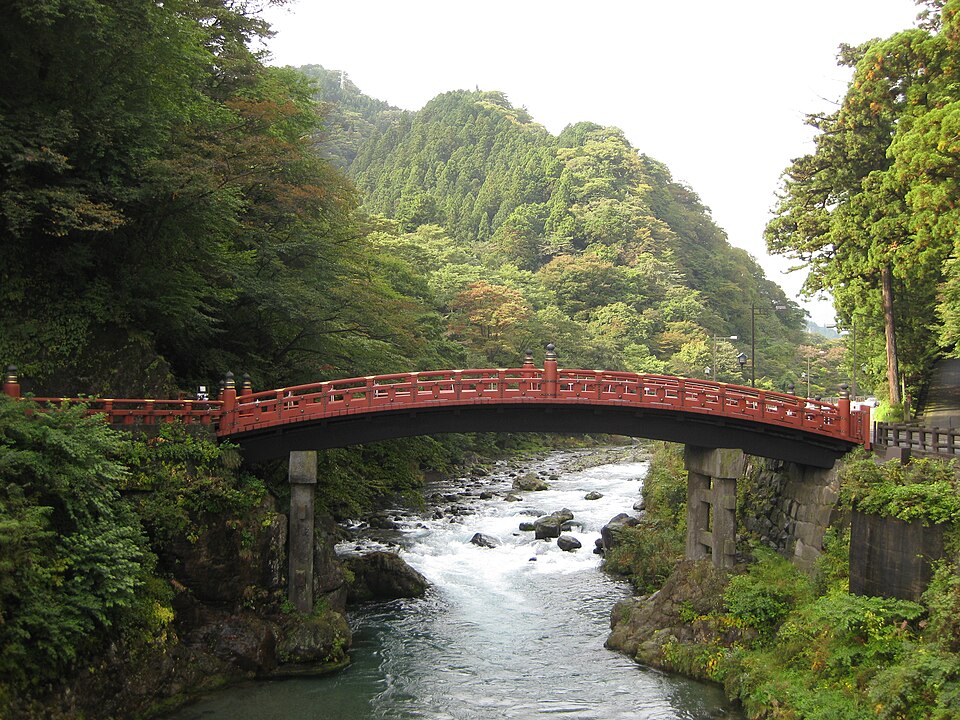Introduction
Nestled in Tochigi Prefecture, the Shinkyo Bridge stands as a mesmerizing cultural landmark that captures the essence of Japanese architectural and spiritual heritage. Renowned as one of Japan’s three most famous bridges, this sacred bridge serves as the gateway to Nikko’s shrines and temples, attracting thousands of visitors who come to marvel at its historical significance and aesthetic beauty.
Key Information at a Glance
- Location: Nikko, Tochigi Prefecture, Japan
- Type: Historic Cultural Bridge
- Construction Year: 1636
- Affiliated With: Futarasan Shrine
- Visitor Rating: 4/5 Stars (563 reviews)
- Nikko Attraction Ranking: #5 of 19 attractions
Historical Background
The origins of Shinkyo Bridge stretch back centuries, with its exact beginnings shrouded in mystery. The current bridge was constructed in 1637 and represents a crucial piece of Nikko’s cultural heritage. Until 1973, the bridge was closed to the public. Following extensive renovations in the late 1990s and early 2000s, visitors can now traverse this legendary bridge for an entrance fee.
Key Attractions
Architectural Marvel
Shinkyo Bridge is famous for its distinctive vermilion color and exquisite craftsmanship. The bridge spans a crystal-clear river, blending architectural artistry with natural beauty. Its traditional Japanese design is framed by dense forests, creating a breathtaking visual panorama that captivates visitors.
Cultural Significance
More than just a physical passage, the bridge serves as a symbolic entryway to the sacred shrine complex. It represents a spiritual transition, embodying deep cultural meanings in Japanese tradition and serving as a portal between the secular and the sacred worlds.
Natural Surroundings
The bridge is embraced by lush forests that transform with the seasons. From the delicate cherry blossoms of spring to the vibrant greens of summer, the fiery maples of autumn, and the pristine white snow of winter, Shinkyo offers a constantly changing landscape of natural beauty.
Best Times to Visit
- Spring (April-May): Cherry blossoms in full bloom
- Autumn (September-November): Stunning autumn foliage
- Avoid: Summer peak tourist season and winter’s extreme cold
Transportation Guide
- Train: Accessible from JR or Tobu Nikko Station
- Bus: Direct bus to Shinkyo Bus Stop (5 minutes, 220 yen one-way)
- Walking: 20-30 minute walk from train stations
Opening Hours and Admission
- Hours of Operation:
- April to October: 8:30 AM – 4:30 PM
- November to March: 9:00 AM – 4:00 PM
- Admission Price: 300 yen
- Special Note: Open year-round
Visitor Tips
- Wear comfortable walking shoes
- Bring a camera to capture memorable moments
- Allow 1-2 hours for your visit
- Respect local customs and site regulations
- Prepare for seasonal weather variations
Conclusion
Shinkyo Bridge is more than just a bridge – it’s a testament to the harmonious blend of Japanese culture and natural beauty. Whether you’re a history enthusiast, photography lover, or cultural explorer, this ancient bridge promises an unforgettable experience. Plan your Nikko adventure now and witness the extraordinary magic of this centuries-old marvel!

Leave a Reply